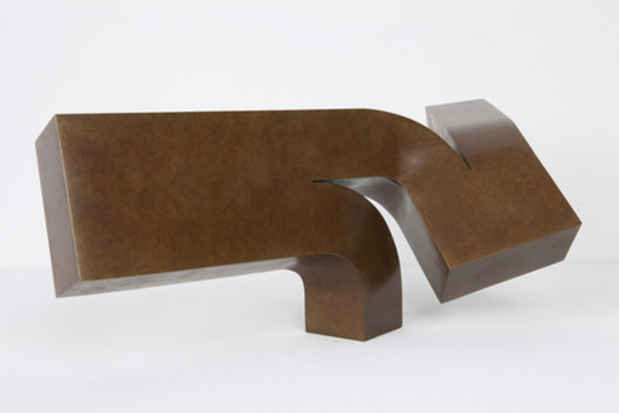Clement Meadmore "Sculpture"
Marlborough Chelsea

This event has ended.
Clement Meadmore was born in Melbourne, Australia in 1929. After achieving early critical acclaim in Australia, he moved to New York City where he met and became friends with Barnett Newman, a relationship he maintained until Newman’s death in 1970. Through Newman, Meadmore met Mark Rothko and Clyford Still, and was influenced by these seminal artists’ adherence to both the abstract non-objective and the overtly expressive qualities of painting. Meadmore stated that, “For me, Mondrian suggested the expressive possibilities of geometry and Barnett Newman extended them by eliminating the geometric feeling from his work.” Meadmore believed that while geometry dictated the underlying form and structure of Newman’s paintings, it was inherently invisible and did not impose itself as subject. This approach to geometry greatly influenced Meadmore’s sculptures, resulting in a singularly unique body of work.
Significantly, in the mid-sixties, Meadmore experimented with bridging Abstract Expressionism and Minimalism. He explained his three goals in creating sculpture were to explore the expressive potential of geometry, to make the whole piece comprehensible from any viewpoint, and to avoid the appearance of a front and a back in the sculpture. His works typically involve a rectangular form that dynamically twists and moves through space, seemingly creating itself in the process. This dramatic gestural character of Meadmore’s work is exemplified by the exhibited sculpture Outspread (1991), a ten foot tall, ten foot wide aluminum sculpture painted black. Outspread rises from a single straight, pillar-like leg to burst into movement as if performing an Adagio with gigantic outstretched legs and arms extended forcefully while in perfect balance.
Although Meadmore preceded Minimalism, his sculptures display several important characteristics of the movement, such as formal simplicity, a foundation in geometry, and the affinity for single, integrated forms. A primary characteristic of his work that distinguishes him from the Minimalists, however, is its signature expressive quality. In the monograph The Sculpture of Clement Meadmore, 1994, the art historian Eric Gibson writes, “Meadmore’s sculptures express ideas and feelings beyond their factual presence. Unlike Minimalists, Meadmore never begins with an idea developed in advance. His compositions are arrived at intuitively.”
Included in this exhibition is the series of works from 1965 entitled Criss Cross, Criss Cross II and Criss Cross III, in which Meadmore exhibits his characteristic attention to proportion, something the Minimalists eschewed. These three steel sculptures, each approximately six and a half feet tall and two feet wide, resemble two superimposed boxes. In the first of the series, it appears that the two rectangular shapes are equal; however, Meadmore cleverly made the upper rectangle about an inch larger to maintain the appearance of equilibrium. Meadmore explained that when the join “feels like it’s in the middle it takes on a very strange character, because you can check visually that the lower is actually smaller, yet it feels right.”
In addition to the large-scale works being exhibited, Meadmore captured the same energy and dynamism in smaller, table-top pieces, such as Swing (1969), Split Ring (1969), Up (1997), and Emanation (2000). With these intimate artworks, it is possible to sense the feeling the artist strove to elicit, “I believe we have a natural sense of three-dimensional form which is one of our most basic senses, having its own range of feeling as unique as our range of musical emotions. It is possible to evoke these through geometric form.”
Media
Schedule
from December 08, 2011 to January 14, 2012